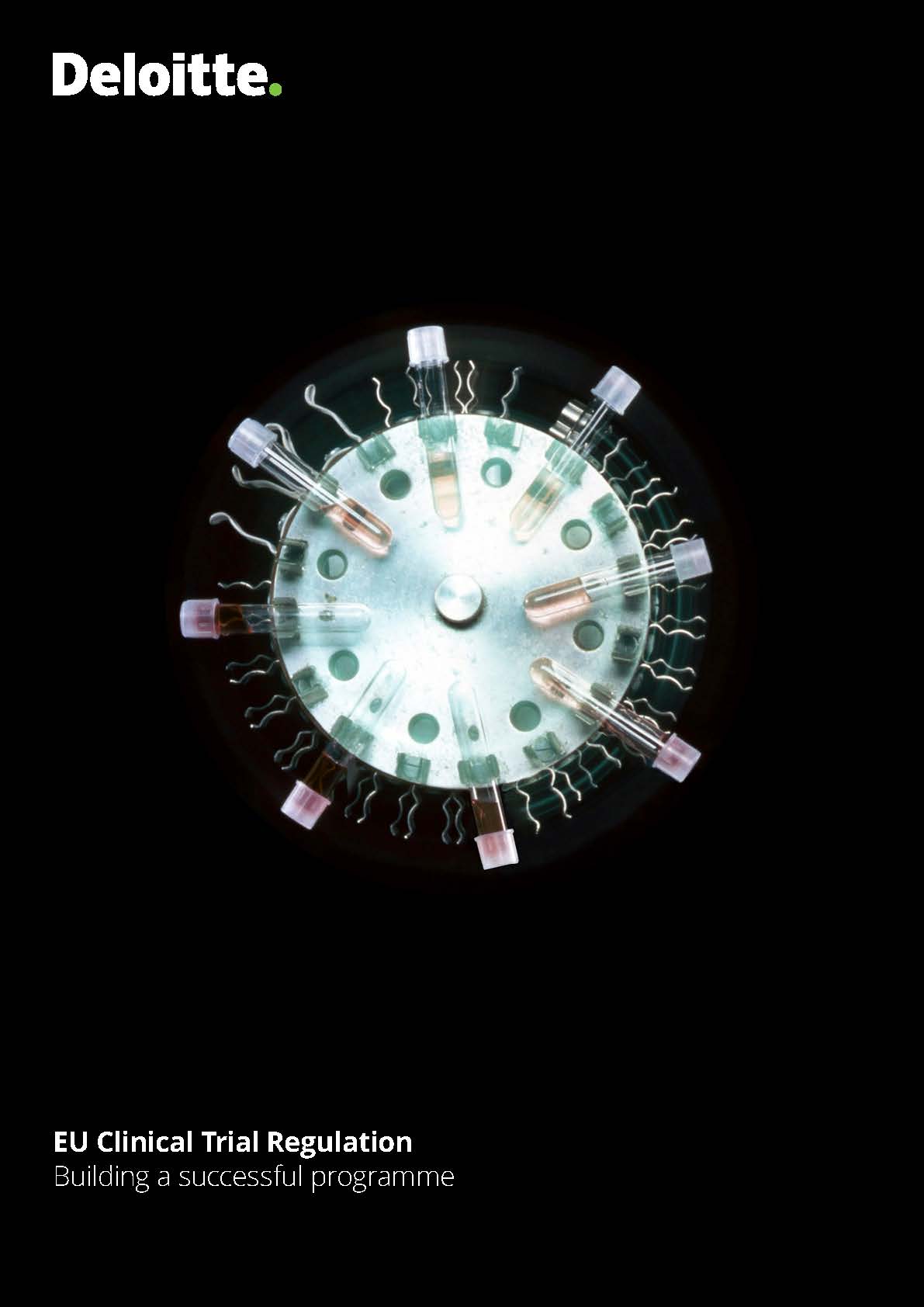Article

EU Clinical Trial Regulation
Building a successful program
The implementation of the new European Union (EU) Clinical Trial Regulation will provide a unified portal and database for trial sponsors and regulatory agencies across the EU Member States, promising to bring greater regulatory convergence and efficiency to the clinical trial application process.
This paper, developed by Deloitte UK, provides a synopsis of the new regulation, including insights on timing, the advantages of preparedness and the impact that Brexit may have. It also provides guidance on how companies can set up a successful CTR program.
The new Clinical Trial Regulation (CTR) is set to revolutionize the clinical trial processes across Europe, impacting all European Union (EU) member states and companies that wish to run clinical trials across the region. It is applicable for Investigational Medicinal Products (IMP) for human use and does not apply to non-interventional trials or trials without medicinal products such as devices, surgery, etc. The regulation seeks to provide a single, unified portal and database for both trial sponsors and regulatory agencies in each member state. For sponsors, the portal will be the main platform to submit applications and notifications allowing regulators to conduct their assessments and supervise the trial.
In 2014, the European Medicines Agency (EMA) released Clinical Trial Regulation EU No 536/2014 that builds on Directive 2001/20/EC and the ideals represented in the Voluntary Harmonization Procedure (VHP) by the Heads of Medicines (HMA) Clinical Trials Facilitation Group (CTFG). In March 2017, the EMA presented an elaborate view on the advantages of moving from the directive to the regulation and the pathway to implementation of the portal and database.
Once effective, this new regulation will drive efficiency through harmonization of the Clinical Trial (CT) application process across Europe, greater transparency in clinical processes and data, and enhanced safety and efficacy of drugs.
The new regulation has brought certain key changes to the clinical trial application process in the EU.
- Streamlining the process for clinical trial application across the EU
- Assessing and authorizing clinical trials by removing duplication and reducing delays in the process
- Introducing a lighter regulatory regime for trials conducted with medicines that are already authorized and which pose minimal risk compared to normal clinical practice
- Simplifying reporting requirements, sparing researchers from submitting largely identical information on the trial process to various bodies
- Recognizing co-sponsorship, which acknowledges that a trial can be led by more than one organization
- Introducing the concept of a single decision on a clinical trial, which will replace the previous separate approvals given by the National Competent Authorities and Ethics (NCAE) committees and reduce the administrative burden on the Member States Concerned (MSC)
This analysis provides a synopsis of this new regulation introduced by EMA including insights on the timelines to be followed by companies for CTR compliance. It also discusses the impact Brexit may have on the clinical trial processes in the region and addresses the question of how existing trials that are simultaneously run in the UK and the EU might be managed moving forward, post-Brexit. It also provides guidance to pharma companies on setting up a successful CTR program.
